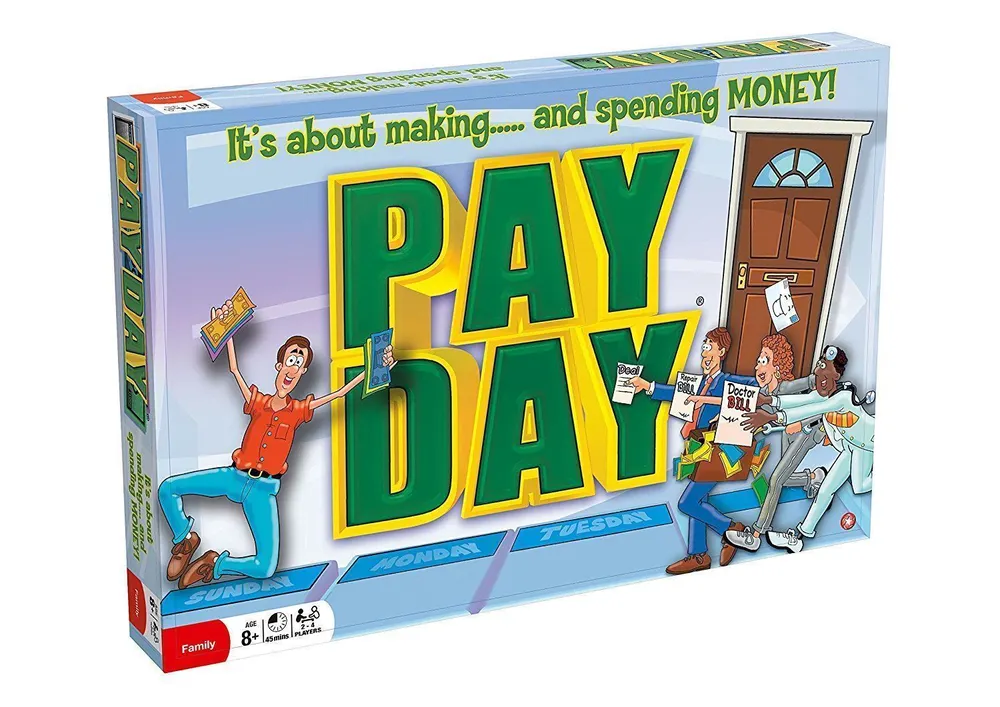Pay Day (1974)
Pay Day
“Pay Day” is a board game originally released by Parker Brothers in 1974, designed by Paul J. Gruen and his brother-in-law Charles C. Bailey. The game was Gruen’s most successful creation, outselling Monopoly in its first production year. The game is currently marketed by Winning Moves Games USA.
Why is Pay Day Popular?
Pay Day is a popular board game because it simulates money management in a simple and engaging way, making it suitable for players of various ages and skill levels. The game has been released in various editions since its inception, with the 1974 version being the most notable.
Game Components of Pay Day
How To Setup Pay Day
To set up the game, each player starts with $325. Players decide how many months to play, which determines the game length. One player is selected to go first. The game board is laid out, and the Deal and Mail card decks are prepared. The Savings and Loan components are also set up according to the specific edition’s instructions.
Gameplay Mechanics and Game Objective
– Players roll the die to move their playing piece 1 to 6 spaces.
– Follow the instructions on the calendar space landed on.
– Collect monthly wages on “pay day” at the end of the month.
– Accumulate bills and expenses from Mail cards.
– Option to purchase items from Deal cards.
Player Experience
Playing **Pay Day** offers a realistic simulation of managing finances, making it both educational and entertaining. The game teaches players about budgeting, saving, and the consequences of financial decisions. It is engaging for families and individuals looking to practice money management skills in a fun, competitive environment.
Pros
Cons
Personal Thoughts on Pay Day
**Pay Day** is ideal for anyone interested in financial literacy and strategy. It is particularly suited for families looking to teach children about money management in an interactive way. The game’s ability to be set up for different lengths makes it versatile for various play sessions. Overall, **Pay Day** is a classic game that combines learning with fun, making it a great addition to any board game collection.
We are supported by our audience. When you purchase through links on our site, we may earn an affiliate commission, at no extra cost for you. Learn more.

